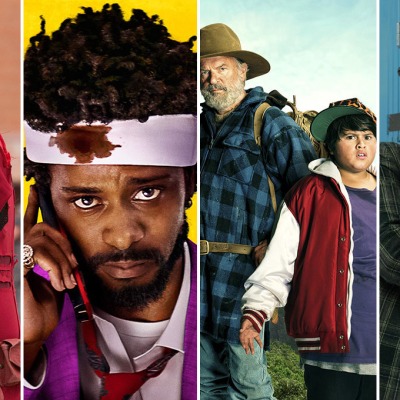
A few facts about Canadian comedy are important to know. This article will explain the components of Canadian sketch comedy. We'll also explore how actors act in the roles and the impact of improvisation. A few examples of Canadian comedy will be included throughout. These examples may help you decide if Canadian comedy suits you.
Canadian comedy structure
Canadian comedy is often satirical and politically-oriented. Many shows also make political statements. Others are more focused on society or pop culture. CODCO made headlines for refusing to air a sketch by the CBC. History Bites mocked recent events frequently.
Canadian comedians often address racial disparities in their material. One example is the "Newfie" joke. There are also jokes about "English Canadians", which target French Canadians. Humber College, Toronto, and Ecole nationale de l'humour Montreal both offer post-secondary comedy writing courses. Both cities are also home to the Just for Laughs festivals and Just for Laughs gallery, which is an international museum dedicated to comedy.

Canadian comedy: The actors
Many actors have performed a wide range of roles in Canadian comedy throughout its history. David Steinberg was one of these performers. He was the son of a Romanian rabbi. After completing his studies at the University of Chicago, he went to rabbinical schools. After graduating university, he was part of the famed Second City Improvisers. Many well-known actors were helped by the Second City in the 1950s, 1960s. Steinberg spent nearly two years performing in this group and perfecting his material before he began his own show.
Canadian comedy has seen many actors gain international fame. Some actors have had success on TV, others have made it to Hollywood. All have made a lasting impression on Canadian and international fans.
The improvised element of Canadian comedy
Improvised comedy, a type of theatre that encourages audience participation, is an example. It can be a great way to start conversations about difficult topics. For example, in Toronto, the Second City is a major league for improvised performers. Rapid Fire Improv, Edmonton, is another major improv troupe with notable alumni.
The Jest Society is another example of Canadian improvised comedy. It subverts stereotypes about small-town life and places a family in a small town. This series stars Eugene Levy, Catherine O'Hara and other SCTV alumni.

Trailer Park Boys' influence on Canadian comedy
It is difficult to overstate the impact of Trailer Park Boys' comedy on Canadian comedy. The true story of two boys from a trailer park was the basis for this show that became a global sensation. It has been described as "the other side of COPS". It was also the first to use mockumentary as a format, years before The Office. This established the "lowlife" comedy genre.
Clattenburg, who was previously employed in Halifax television, filmed the pilot for his own money. He flew to Toronto then to pitch the idea to television executives. But it wasn't easy to sell the show. He finally gave up pitching his idea. The producer Barrie Dunn joined him and cold-called Showcase. This was a new cable channel.
FAQ
How TV ads are measured
Advertising companies measure the effectiveness of their ads by counting how many people view them. They also gauge whether their ads have reached their target markets.
They do this by using surveys that ask viewers if they remember seeing the ad. They know that they were exposed to the advertisement if they answer yes.
If they refuse to answer, they will know they weren’t exposed. This indicates how effective the ad reached its target market.
How long does it take to make a commercial?
It depends on the project's size. A small project might only need one person to film it, while a large project may need several hundred people.
A 30-second spot generally takes between 2-5 business days to complete.
Is tv advertising still relevant today?
But, TV advertising is no longer effective. It is because people are less likely to watch television. They are instead using other media.
Marketing is a full-time job and TV ads are a key part of it. We need them to reach audiences where they spend most of their time online.
Also, we need to ensure that TV ads connect with customers on a deeper level. This requires that we think differently about the way TV ads are created.
We can no longer rely on simple slogans or images. Instead, we must look at how TV is experienced. How do we connect with people emotionally and make them want to buy our products.
These are all things which require creativity. Digital agencies are now the best place to find creativity.
What industry advertises the most on TV?
The auto industry.
They advertise their cars so often because they are always trying to improve them. They want to make them better, faster, and safer.
They also need to keep potential customers buying their products.
So, what are they doing? They advertise all over.
On billboards, bus stops, television, radio, magazines, newspapers, you name it.
They are not your average ads.
They're very different from each other. Some are funny, while others provide information, some inspire, and some are educative.
It doesn't really matter what kind you are watching, though.
What are the various styles of commercials you can see?
Three main types of commercials exist: TV Commercials and Radio Commercials.
TV Commercials are typically 30 seconds in length. These commercials are often used to raise brand awareness.
Radio commercials last longer (usually around 1 minute) and are often used to promote products.
Print ads are shorter (usually 2-3 minutes), and they're usually aimed at specific audiences.
Do advertisers spend a lot of money on TV?
Advertisers invest a lot of cash to promote their products via TV. They also spend a lot trying to convince customers to buy their products.
This is achieved by spending money on research in order to determine what people like and don't love about their products.
This information is then used by advertisers to create advertisements that are appealing to consumers.
TV for business:
Yes, TV works for businesses. Television helps businesses reach more clients.
You might put up signs in every corner of town when you are selling your house. You can also advertise in local newspapers such as the paper, the real property section, or the classifieds.
You can also advertise online via social media sites or websites like Facebook.
With TV, you don’t need to worry about writing articles or putting up signs.
Instead, you just sit back and relax while someone else does all the work for you.
That way, you get the best results possible without having to pay for expensive marketing campaigns.
Statistics
- Television is a great brand awareness tool - Almost every American has a television, with 83 percent of adults having two or more, and American households keep their televisions on for 8.1 hours each day on average. (marketingevolution.com)
- This includes 97 percent of Gen X, and 95 percent of Millennials. (marketingevolution.com)
- In fact, when the ad first launched, Dos Equis quickly became one of the fastest-growing beers, increasing its sales by over 22%. (qualitylogoproducts.com)
- Not to mention, sales rose an incredible 11% following the launch of this commercial. (qualitylogoproducts.com)
- 93 percent of American adults listen to the radio over the course of the week. (marketingevolution.com)
External Links
How To
How can I decide which type of advert to run on TV?
There are many things to take into consideration when choosing between traditional print ads, digital billboards and radio spots.
First, choose whether you want short-term or long-term results.
Short-term exposure means that the ad needs to generate immediate sales. Also, the advertisement should immediately make people aware about your product.
The goal of long-term exposure is to increase awareness over an extended period. This could mean a few weeks or even months.
Next, you need to choose between one-off campaigns or ongoing campaigns.
If you're looking to promote a single event or product, then one-off campaigns may be the best option. These campaigns are generally very expensive because they require a lot of planning and preparation.
These campaigns are generally less effective but cheaper. They require you to run the same ad each week or every month.
Last, you must decide how much you're willing to spend.
Either you can invest in large amounts or small amounts. Small amounts of advertising will cost more per impression than larger amounts.
However, if the advertising isn't as extensive, you might not be able reach as many potential customers.